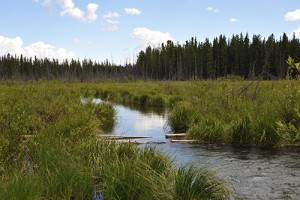
The Environmental Protection Agency (EPA) and the U.S. Army published the Clean Water Rule, which the EPA says will protect drinking water for more than 117 million Americans.
Released May 27, the rule aims to provide a clearer definition of the waters protected by the Clean Water Act. For example, tributaries with signs of flowing water, including streams, rivers and wetlands, will be protected.
“For the water in the rivers and lakes in our communities that flow to our drinking water to be clean, the streams and wetlands that feed them need to be clean too,” said EPA Administrator Gina McCarthy. “Protecting our water sources is a critical component of adapting to climate change impacts like drought, sea level rise, stronger storms and warmer temperatures–which is why EPA and the Army have finalized the Clean Water Rule to protect these important waters, so we can strengthen our economy and provide certainty to American businesses.”
According to EPA, the Clean Water Rule will:
- Clearly define and protect tributaries that impact the health of downstream waters. The rule says a tributary must show physical features of flowing water to warrant protection.
- Provide certainty in how far safeguards extend to nearby waters, or waters next to rivers and lakes.
- Protect the nation’s regional water treasures. This will protect prairie potholes, Carolina and Delmarva bays, pocosins, western vernal pools in California and Texas coastal prairie wetlands.
- Focus on streams, not ditches. Ditches that are not constructed in streams and that flow only when it rains are not protected.
- Maintain the status of waters within Municipal Separate Storm Sewer Systems. The rule does not change how those waters are treated.
- Reduce the use of case-specific analysis of waters. The rule limits the use of case-specific analysis by creating clarity and certainty on protected waters.
While environmental organizations applaud the rule, landscape industry associations oppose it.
Responsible Industry for a Sound Environment (RISE) does not support the Clean Water Rule. It called the rule “agency overreach” and said it will negatively affect public health and safety by requiring permits for pesticide use near bodies of water.
“The sweeping redefinition impacts every pesticide treatment near water, including those to treat mosquitoes and help prevent mosquito-borne diseases; to keep power, highway, rail and shipping infrastructure safe and useable; and to eradicate invasive and non-native plant and insect species,” says Aaron Hobbs, RISE president. “Federal, state and local governments will see immediate impacts to their vector control programs and their ability to effectively protect people, pets and communities from West Nile Virus, Dengue Fever, heartworm, Eastern and Western Equine Encephalitis, and, the most recent threat, Chikungunya.”
Siding with RISE, the National Association of Landscape Professionals (NALP) also weighed in on the new rule. NALP concerns include an increased necessity and wait period for National Pollutant Discharge Elimination System (NPDES) and CWA Section 404 permits for pesticide applications and landscape installations, which could delay projects.
Both organizations cite the threat of citizen action lawsuits and violations of personal property rights, as well.
Meanwhile, the Irrigation Association (IA) said it supports “the intent and goals” behind the Clean Water Act, but it remains “concerned with how the new rule could negatively affect the use and value of agricultural land and will continue to monitor how expanded federal authority granted under this rule affects our industry.”
Barring congressional action, the rule will go into effect 60 days after its publishing.
According to IA, lawsuits attempting to stop the rule from going into action are in motion.
Photo: Chris Hunkeler / photo on flickr

